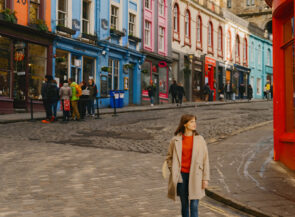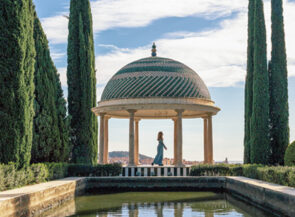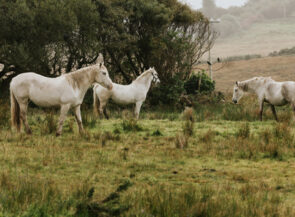To know Vermont is to know that size is overrated. Among U.S. states, only Wyoming has fewer people. The Houston metro area is wider than southern Vermont. On the list of largest cities in each state, Burlington, the most populous in Vermont, is dead last. But size belies impact. Proudly progressive, Vermont abolished slavery in 1777 (before it even joined the U.S.), and in 2000 it became the first state to grant same-sex civil unions. Generations of family farmers have handed down a distinct tradition of self-sufficiency, which has fed a thriving DIY culture of artisans, craft brewers (it’s the state with the most breweries per capita), and locavore chefs. Conservation and adventure intertwine on hiking and biking trails and at the Northeast’s favorite ski resorts. Perhaps the largest virtue of the Green Mountain State’s modest size is that its urban, rural, and wilderness attractions are all within conquering range over three perfect—and often surprising—days.
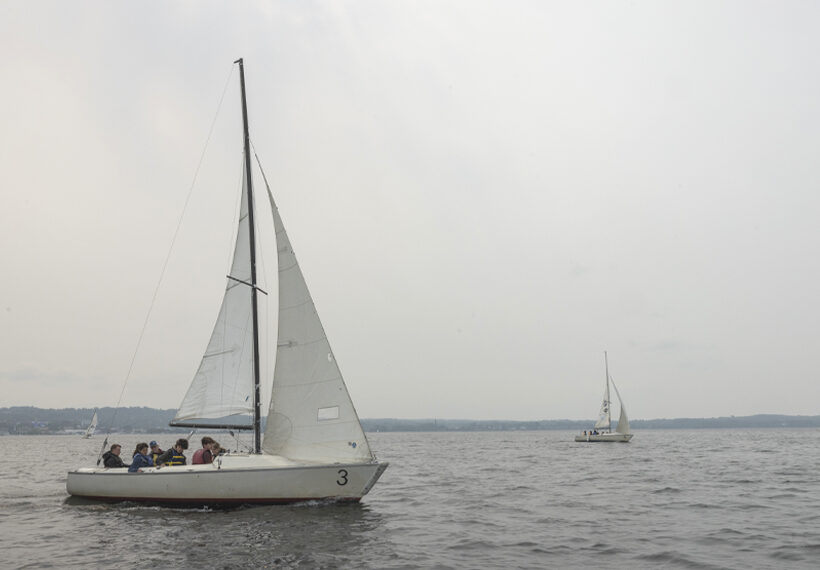
Day 1
Sailing a great lake, meeting a patriot, and saluting the sunset in Burlington
As a child of the Great Lakes, I believe there is no better way to start a day than to sail on one—in this case, Champlain, which was briefly designated the sixth Great Lake in 1998. With the Green Mountains at the stern and the Adirondacks before the bow, I grip the tiller of a 23-foot Sonar in the company of my instructor, Peter Duval of the nonprofit Lake Champlain Community Sailing Center. We breeze north to the limestone cliffs of Rock Point, then tack south for a panoramic view of Burlington, where only a mid-rise here and a church steeple there poke through the trees. Duval relates key military maneuvers from the 1776 Battle of Valcour Island, then discusses the development of fiberglass, which meant, he says, that “every man could sail.” The center aims to keep it so by offering lessons, especially to the underserved. “This is a great lake to learn on,” Duval says. “Most times, you come out and feel alone, but if anything happens another boat is right there to the rescue.”
I manage to jibe us back to base, and after a drama-free landing I make my way down the shore to ECHO, Leahy Center for Lake Champlain, which is devoted to the ecology of the 435-square-mile lake. I’m just in time to watch the staff feed the sculpin, a type of lake fish that’s known to hop rather than swim. It’s just one of the wondrous species I meet at the center, which is also home to gray tree frogs, red-spotted newts, and spiny softshell, painted, wood, and stinkpot turtles.
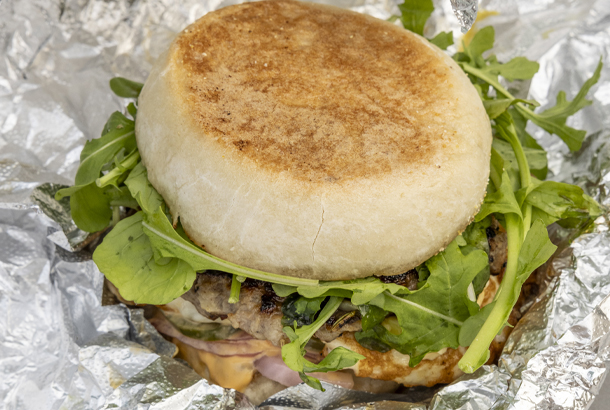
For my midday feeding, I head to Poppy Cafe, a homey spot in Burlington’s Old North End run by sisters Emily and Abby Portman, who pile sandwiches high with unexpected ingredients such as paprika roasted potatoes, rhubarb-cherry-evergreen preserves, and corn nuts. Inside a tiny storefront, I scarf down The Ode, a two-fister packed with soft-boiled egg, feta cheese, pickled beets, carrots, and onions slicked with caper aioli.
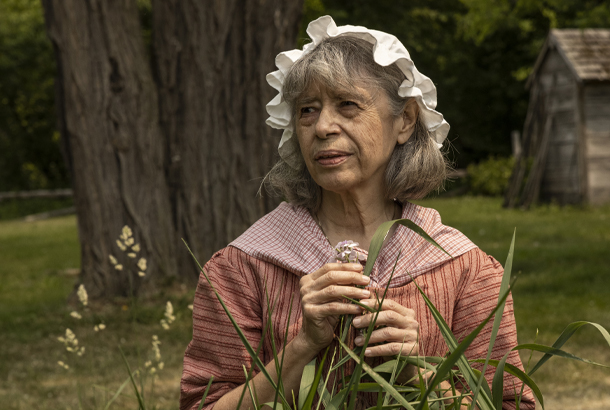
Leaving Poppy, I spy a brown historic sign—catnip to this history major—for the Ethan Allen Homestead Museum, and I swing north to visit the farm the Revolutionary War patriot established on the Winooski River in 1787. Executive director Angie Grove tells me the story of Vermont’s founding father while leading me through a re-creation of an indigenous Abenaki camp and the gardens of Fanny Allen (Ethan’s wife and Vermont’s first botanist).
She talks me through an exhibit on how to grow, spin, and weave flax into cloth—an elemental look at 18th-century self-reliance. “This was the frontier,” Grove says, “and they had to do everything themselves.”
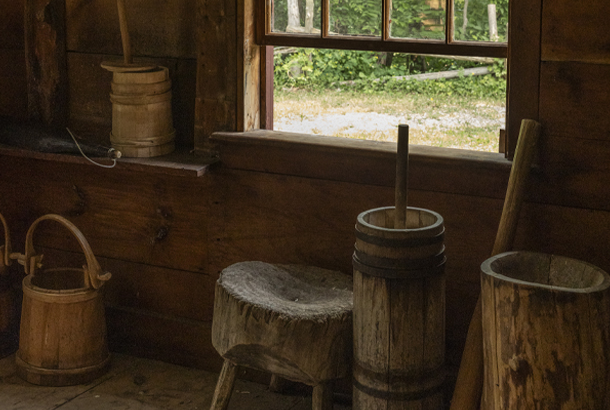
Frontier Vermonters also made cheese, and their descendants developed a love for ice cream—specifically, the creemee, the phonetic soft serve I find at a walk-up window downtown. Little Gordo Creemee Stand ruins me for Dairy Queen forever. The coffee-maple twist mingles the mellowest cappuccino with just the edge-blunting hint of maple syrup. The reverent couple next to me at a picnic table remain silent until they finish their cones and one of them declares, “That was good.”
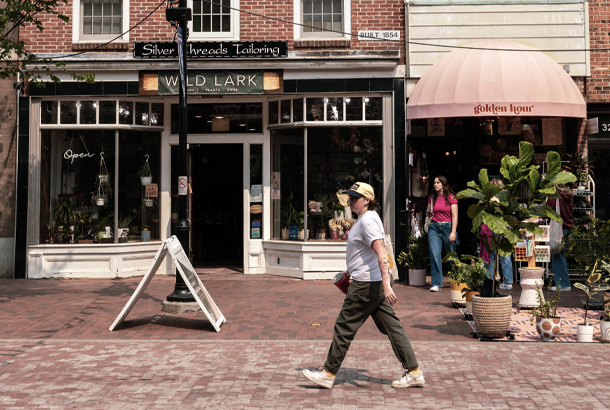
The good life continues at Church Street Marketplace, a four-block, pedestrian-only retail strip inspired by Copenhagen’s car-free Strøget. The area is bustling with shoppers, diners, and people-watchers on park benches. Domestic and international outdoor brands such as Black Diamond and Fjällräven mingle with locally owned stores including Frog Hollow Gallery, where I fall hard for Burlington printmaker Suzanne LeGault’s landscapes and Barre-based sculptor Pamela Wilson’s minimalist ceramics.
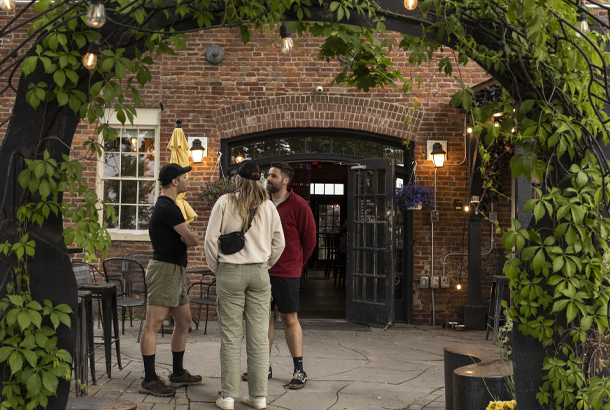
Before I can fritter away the fee for this story, the late afternoon sun draws me back to the lake. Burlington belongs on everyone’s list of epic sunset destinations— next to California, Hawaii, and Tahiti. Crowds flock to waterside hubs such as Foam Brewers to watch the sun sink beyond Lake Champlain and the forest-purple Adirondacks. As the minutes tick toward sundown, the buzz grows and tables overflow, until a spellbinding crescendo bathes the congregants in glowing light and goodwill. I drink a toast to it with Jon Farmer and Bob Grim, two of the partners in the brewery, which is inclined toward small-batch experiments using local wheat or barley. “Vermont is driven by quality and thoughtfully handmade things,” Farmer says, “as opposed to large-scale products.”
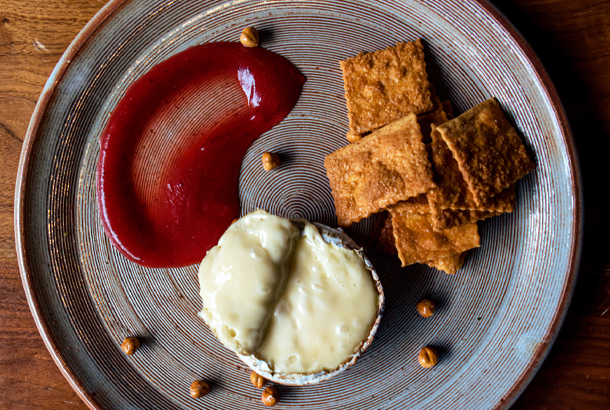
Nearby, the last of the sun’s rays spotlight the sauté station in the open kitchen of the acclaimed locavore dining destination Hen of the Wood. I snag a seat at the chef’s counter, where I can chat with executive chef Jordan Ware as he expedites orders of cucumber with pickled shrimp and rib eye with crispy sunchokes. I particularly admire the Vermont-made cheeses and produce and meats from local farms called out by name on the menu. “Now, this is going to sound like I’m telling stories,” Ware says, smiling and laying before me a plate of sturdy asparagus alongside a bright orange yolk, “but these eggs come from our pig farmer, whose kids raise them for their 4-H club.”
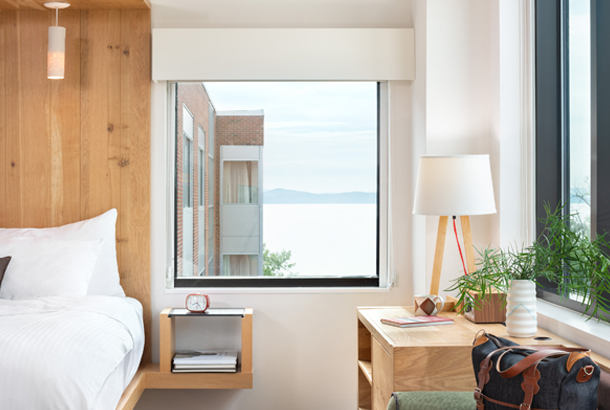
I only have to stumble next door to find a feathered landing at the Hotel Vermont, a Modernist boutique property that doubles as an homage to all things green. The lobby restaurant and bar, Juniper, is in full swing, with a brassy jazz quintet grooving beside the fire. I order a fizzy Gatsby Spritz that seems to suit the bubbly moment. Still, I can’t resist the allure of my room, where a stack of books by local authors and a cuddly patchwork robe from the Vermont Flannel Company await.
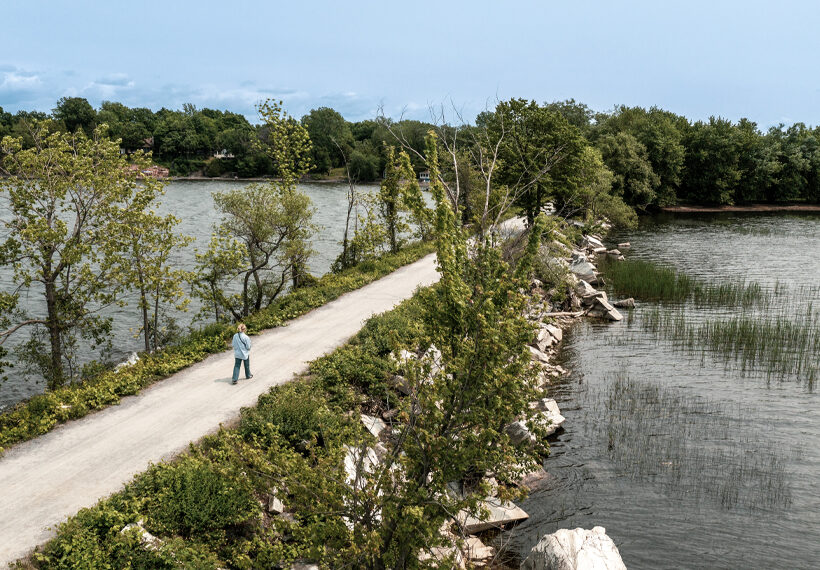
Day 2
Biking on water, exploring a Notch, and a brush with The Sound of Music
In any world, a perfect day for this early riser would start with unlimited, complimentary access to an espresso machine—like the one outside my room at the Hotel Vermont. So, I’m already fully caffeinated when I arrive at The Grey Jay, three blocks away. Cara Tobin, the chef and owner of the acclaimed Eastern Mediterranean restaurant Honey Road, brings a worldly point of view to breakfast and lunch at this cozy new café, a 34-seat storefront warmed by Moroccan pendant lamps. I order shakshuka, a North African dish of sunny-side eggs cooked in tomatoes and red peppers. I sop up all that goodness with mana’eesh, a focaccia-like bread topped with the spice blend za’atar. (A glossary on the menu helpfully defines all these terms.) “The greatest compliment I ever got was from another chef who said, ‘It’s so cool, because you’re using all the same ingredients as the rest of us, but you’re doing it differently,’” Tobin says with a laugh, while taking a break on a stool next to mine.
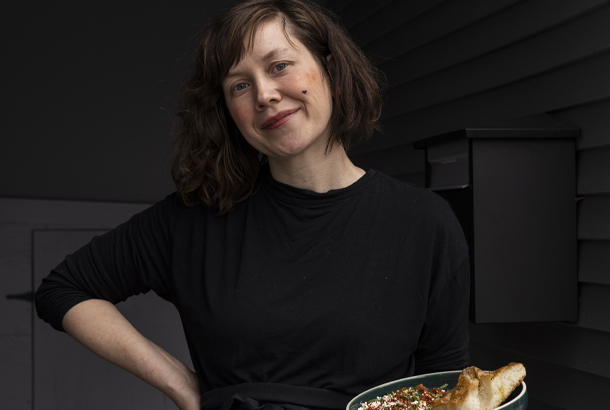
I set out to burn off those calories on the Island Line Trail, a 14-mile rail trail that runs along Lake Champlain and crosses the water to a series of islands (with the help of a seasonal bike ferry that bridges a 200-foot gap in the causeway). At Local Motion, a nonprofit bike rental shop and advocacy group, services and marketing director Tom Clark recommends a Rad Power electric bike if I want to do the whole route in less than a day. “This city appreciates the outdoors,” he says as I roll away. “It’s all about recreation in Vermont.”
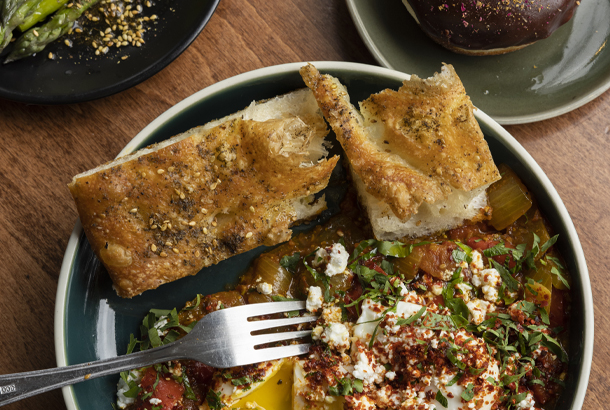
Cruising along the rail yards, I pass a beach park and bird-filled wetlands en route to the gravel causeway. I feel as if I’m cycling on water, cormorants hot on my tail, as I take in views of the Adirondacks in one direction and the Greens in the other. I make it to the gap before turning around, and on the way back I cheat a little with the electric boost, at one point getting the Rad up to 20 miles per hour. I share the gravel path with recreationalists of all stripes, including Nordic walkers, cross-country skaters, and cyclists. Everyone smiles or waves, which could be small-town good cheer, the effects of the cloudless day, or a response to the huge smile plastered on my face.
My plan is to head into the nearby Green Mountains, but first I stop in the city’s South End at Burlington Beer Company, located in a 14,000-square-foot warehouse once occupied by the Lumière Brothers, the inventors of one of the first motion picture cameras. I excavate some indulgent Korean nachos—piled with local beef, kimchi kraut, and cheddar—and sample the brewery’s signature double IPA, It’s Complicated Being a Wizard, while chasing pellets around the Ms. Pac-Man maze in the free game room.
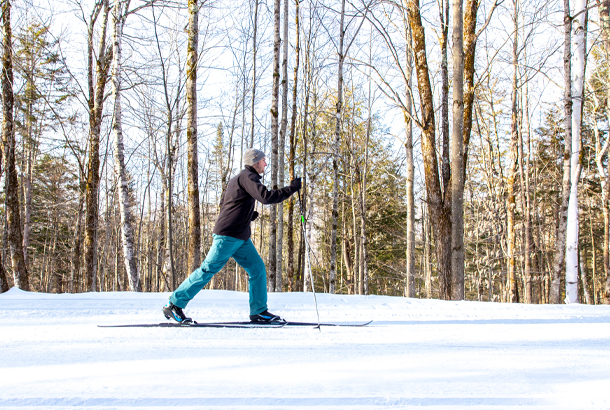
Within 20 minutes of leaving Burlington, I’m deep in farm country, distractedly driving among dairy barns, maple syrup shacks, and covered bridges. The landscape is idyllic, and made more so by the lack of ads, thanks to the state’s ban on billboards. Route 104 heads east to Jeffersonville, where I turn south on Route 108, a seasonal road that passes several ski areas on the way through Smugglers’ Notch, a narrow mountain pass named for illicit trade that began as early as 1807 with potash and continued during Prohibition with bootleg liquor.
The slow, curving road is a gateway to Green Mountain hiking, including the Long Trail, the nation’s first long-distance trail, which requires about 30 perfect days. I park at Smuggler’s Cave, where contraband was allegedly once hidden, and set out on the mile-long climb to Sterling Pond for panoramic views of the pine-forested mountains. Back in the car, I head down the highway and then up Mount Mansfield’s winding 4.5-mile Toll Road, topping out at 3,850 feet of windshield-framed splendor—not far from the 4,393-foot summit of the state’s highest peak.
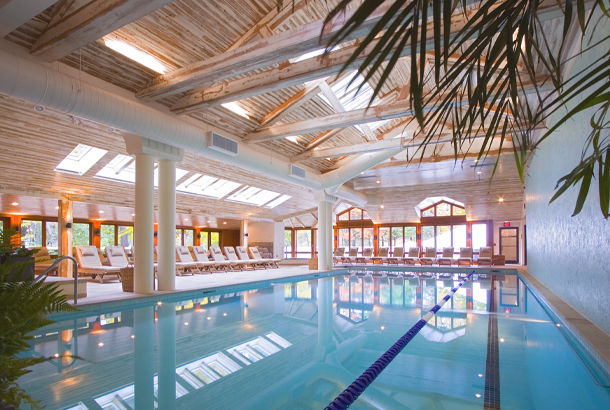
I find a reward for my Alpine efforts in the escapist town of Stowe at Topnotch Resort, a renowned tennis destination. Aside from the courts, the property boasts an elaborate spa that has three swimming pools (two of them outdoors), 30 treatment rooms, and more than 100 treatments. I go thematic with a signature massage that uses floral hops oil in honor of Vermont’s breweries; I emerge unknotted, revived, and thirsty for the real thing.
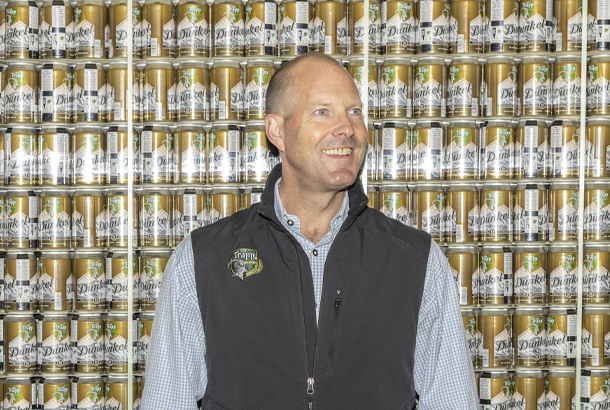
If, like me, you grew up watching The Sound of Music, meeting a living von Trapp qualifies as a peak celebrity experience. Sam von Trapp, the youngest child of the youngest child of Maria and Georg, helps run the Stowe-based family’s businesses, which include the Trapp Family Lodge (opened in 1950) and von Trapp Brewing, where I meet Sam for pints of pilsner. Beer banners hang from broad timber beams in the soaring, taxidermy-filled space, and a wall of windows frames Mount Mansfield. “Vermont reminded my grandparents of Austria, not just in the geography, but in the hardworking, self-reliant, independent nature of Vermont farmers,” von Trapp says, adding that his father, Johannes, always wanted to open a brewery in the Austrian tradition. “There’s actually a saying in Austria that the best beer and the best bread come from around the corner.”
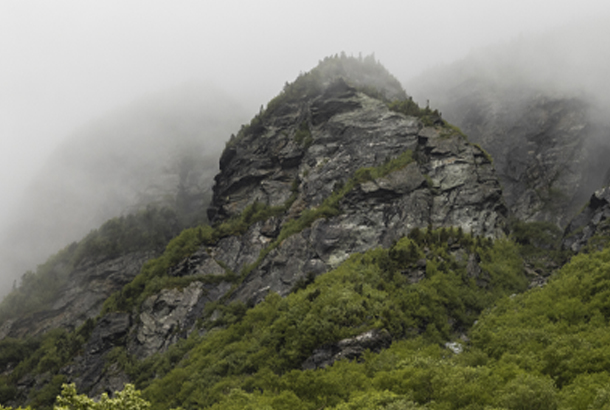
Back at Topnotch, “the hills are alive” repeats in my head as I gaze again at Mansfield, this time over misoglazed Faroe Island salmon on the patio at the resort’s restaurant, The Roost. The dimming evening light cues a lullaby, courtesy of the tree frogs. After dark, a staffer lights the logs in a stone hearth and leaves me with complimentary s’mores fixings—a sweet send-off to bed.
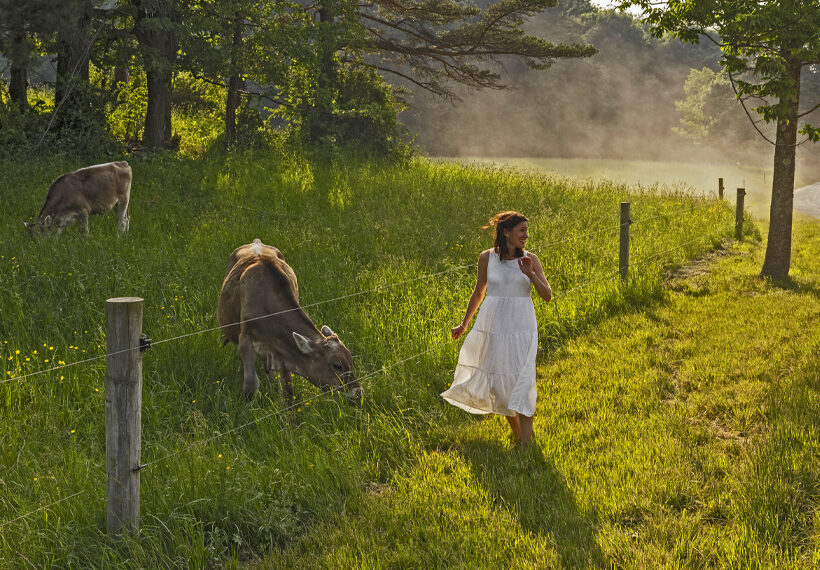
Day 3
Dairy indulgences, a power lunch, and teeter-tottering miniature goats
A great resort is always hard to leave, and that’s true of Topnotch, where I manage to sneak in an early morning swim before heading to the nearby town of Waterbury, another Green Mountain charmer. The train station, built in 1875 and restored in 2006, houses a branch of Black Cap Coffee & Bakery, where I stop for a latte and an egg and cheese sandwich. It’s a perfectly portable breakfast for a walk around the historic village, highlighted by hip-roofed Victorian mansions, a Gothic revival church, and the Queen Anne–style Old Stagecoach Inn, built in 1826 and still serving travelers today.
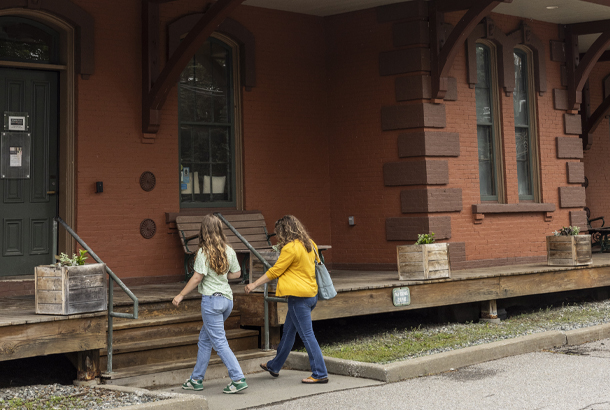
Next, I head to Waterbury’s most notable commercial resident, the Ben & Jerry’s ice cream factory, a 24/7 operation that churns out more than 350,000 pints a day. The famously funky, sustainably minded company offers tours that are part Willy Wonka (there’s no photography of the production room floor) and part vaudeville shtick (Guide: “Why does a milking stool have three legs? Because the cow has the udder!”), culminating in a scoop of Butterscotch’d, which is ribboned with caramel and studded with pieces of fudge-coated pretzels. “They used to hand-crank the ice cream in five-gallon buckets, and have taken that process and scaled it,” says hospitality operations general manager Samantha Lacasse, summing up how the company grew from two guys in a converted gas station in Burlington to its present size. “It’s mind-bogglingly impressive, because the quality has stayed the same.”
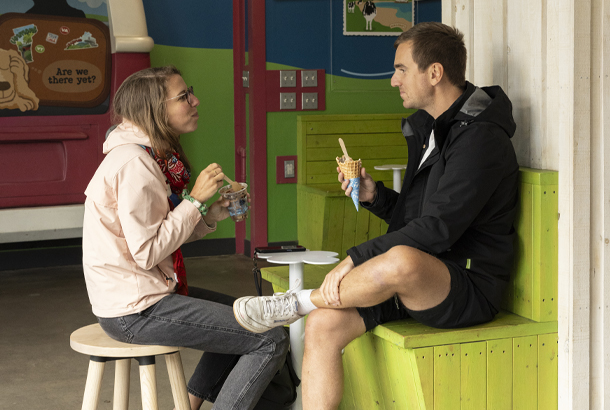
Eager to exceed my daily recommended amount of dairy, I head up the road to the flagship retail store of Cabot Creamery, which was founded in Vermont in 1919 and is now a cooperative comprising more than 500 family farms in New England and New York. The shop is as experiential as it can get without having you churn your own butter, offering tastings aplenty—creamy one-year, rich three-year, and kicky five-year cheddars. The last one leaves me floored. Do I detect something… crunchy? “Those are tyrosine crystals,” retail operations manager Erica Burke tells me, noting that they’re also found in Italian Parmesan. “That’s a sign of really good milk made into a high-quality cheese that’s aged well.”
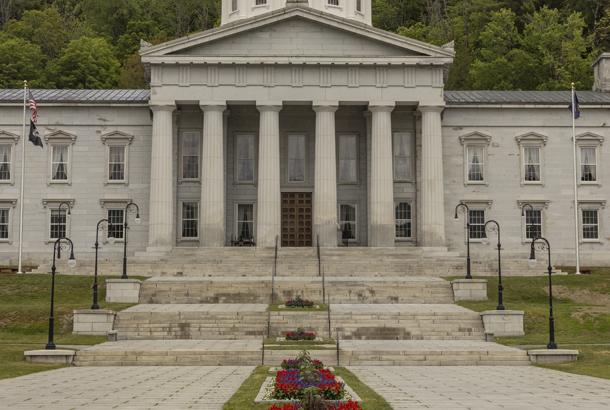
Having eaten my weight in cheese, I continue 15 minutes on to Montpelier, the nation’s smallest state capital—and likely the only one where I can park my road-hogging Toyota Highlander directly opposite the State House. Designed in 1857, the building is a stunning example of Greek Revival architecture, and I freely wander the halls of power, ogling the art collection while rubbing elbows with state representatives, staffers, and press. A friend tipped me off to the cafeteria, and while she described the food as “public-servant,” it’s no matter; the setting, for this political junkie, is an insider thrill with a side of clam chowder.
Next door, I tag along with a middle school field trip at the Vermont History Museum, where I ponder the origins of the state’s environmental movement, the rise of its cheese production (as a way to preserve all that milk), and the dawn of its tourism industry while the kids zip between an Abenaki wigwam and a stuffed mountain lion known as a catamount.
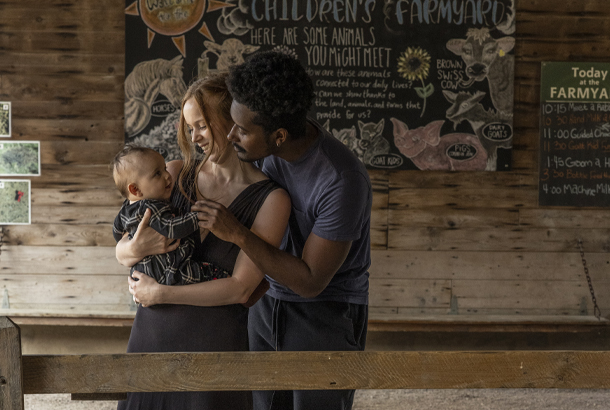
Pursuing the local prescription for life in balance, I file the history lesson away and return to nature. Within 45 minutes, I’m back alongside Lake Champlain at Shelburne Farms, an educational nonprofit on a 1,400-acre working farm a few miles south of Burlington. Founded by an heir to the Vanderbilt fortune and designed by Frederick Law Olmsted, Shelburne has pedigree to spare, which is made apparent by its stately stone and shingle barn. Through a glass wall in the cheesemaking room, I spy blocks of cheddar that have been pressed from 580 pounds of cheese curds. According to the schedule on the blackboard, milk was delivered at 8 a.m., worked into curds by 10, cut into slabs at 12:05, and “hooped” (molded) by 2:30. “We’re here to connect people to where their food comes from,” says communications director Holly Brough, who introduces me to the animals outside, including an energetic trio of Nigerian dwarf goats playing on a teeter-totter. After the 4 p.m. milking of a tolerant cow named Brewer, I’m handed a half-gallon of milk and directed to Tristan, a Braunvieh/Swiss Brown calf, who nearly suctions the plastic bottle from my hands as he drains it. After my close encounter with Tristan, I’m feeling a bit barnyard for the Shelburne Farms Inn, where I’ve booked a room for the night. The antique-filled, 19th-century mansion was the home of William Seward Webb and Lila Vanderbilt Webb, and I take a gaper’s tour through the library, the light-flooded tea room, and the main hall before allowing the staff to guide me up to Overlook, Lila’s old bedroom (and mine for the night), with its perfectly framed views of the front lawn and lake. I ask if I’m underdressed for dinner, but a front-desk staffer assures me, “You’re still on a farm,” adding that they see it all, from muck boots to ball gowns.
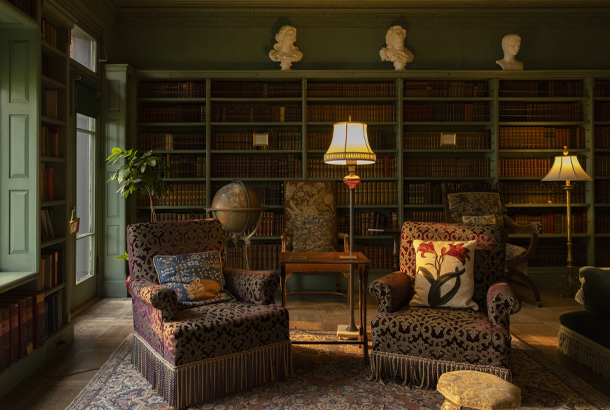
I spot at least one wedding dress on the lawn during cocktail hour, which I enjoy from one of the many Adirondack chairs strewn across the broad lawn; the grass slopes down to a flower garden backdropped by the distant mountains for which the chairs are named. Inside, I dine as locally as possible, on a just-picked salad and tender farm-raised lamb, sitting beside a life-size portrait of the lovely yet seemingly distant Lila. “She had a toothache that day,” says inn director Ari Sadri. “I always think she looks a little diffident.” She might be the only unengaged person I’ve met in Vermont.
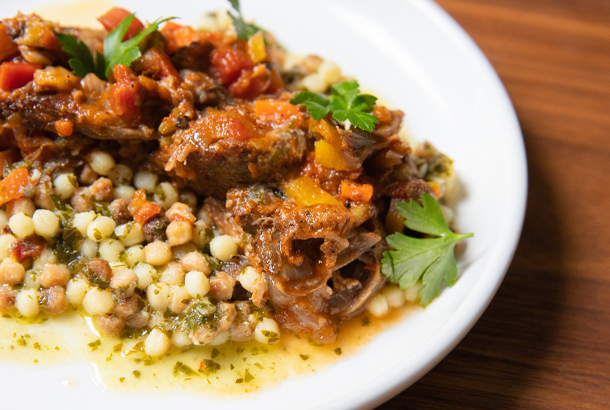
Later, as the strains of “La Vie en Rose” played by the pianist in the library drift through my window and the moon rises over the lake, I think back on everything I’ve experienced over the last three days and come to a delightful realization: This creemee-style twist of nature and culture is all within a footprint so tiny I’ve barely used a quarter of a tank of gas on the trip. The best things really do come in small packages.
Green Mountain Getaway: Fly nonstop to Burlington, Vermont, from Chicago, Denver (summer seasonal), New York/Newark, or Washington, D.C., or connect from more than 200 U.S. cities.

